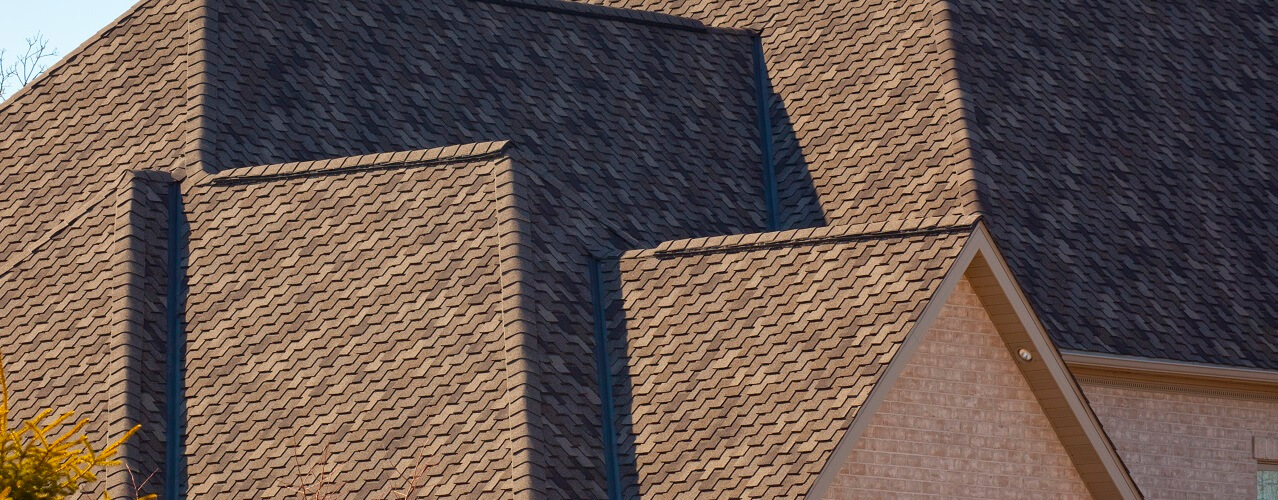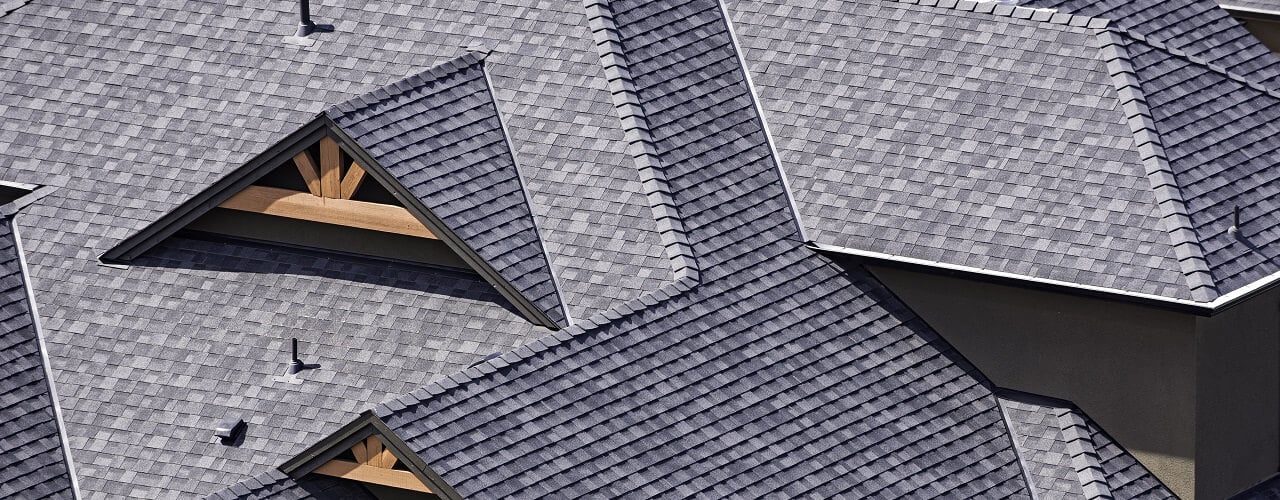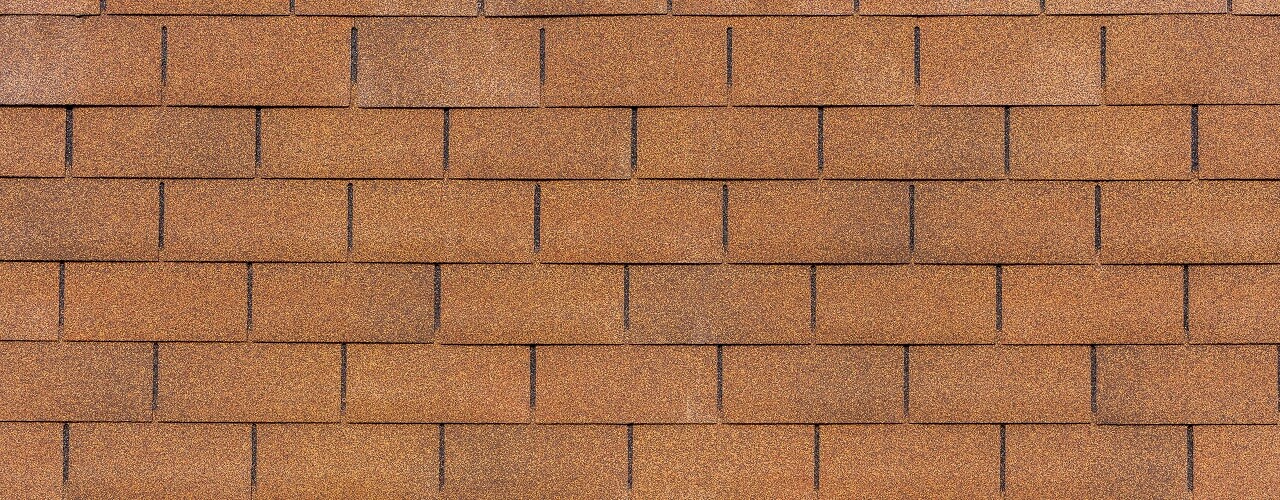“Your Guide to Choosing Asphalt Shingles: Durable, Affordable, and Versatile”
When it’s time to repair or replace your roof, it’s an opportunity to improve your home’s protection, energy efficiency, and curb appeal. Among materials like clay, slate, metal, and wood, asphalt shingles stand out as a top choice for their balance of durability, affordability, and versatility. Here’s why they continue to dominate the market and how to choose the best option for your needs.
Why Asphalt Shingles?
Asphalt shingles are a trusted solution for homeowners looking to combine practicality and style. Engineered to endure harsh weather, resist fire, and reduce energy costs, they provide a reliable roofing option at a fraction of the cost of other materials. With an extensive range of colors, textures, and designs, asphalt shingles offer customization to match any home’s aesthetic.
What Are Asphalt Shingles Made Of?
Built for strength and longevity, asphalt shingles are composed of:
• Base Mat: Fiberglass or organic felt that provides structure.
• Asphalt Coating: Adds waterproofing and fire resistance.
• Mineral Granules: Protect against UV rays and create vibrant color options.
• Fillers: Stabilizing materials like limestone or silica for added durability.
Advantages of Asphalt Shingles
1. Easy Installation: Asphalt shingles can be installed efficiently, often over existing ones, saving time and labor costs.
2. Budget-Friendly: As one of the most affordable roofing materials, they fit nearly any budget.
3. Durability: Depending on the grade, asphalt shingles can last 15 to 50 years.
4. Customizable Look: They replicate the appearance of premium materials like slate or wood without the high price.
5. Energy Efficiency: Modern options reduce heat absorption, keeping homes cooler in warmer months.
Considerations and Drawbacks
1. Routine Maintenance: Clearing debris, ensuring flashing integrity, and preventing moss or algae buildup is necessary.
2. Lifespan: Lower-grade options have shorter lifespans compared to slate or metal roofing.
3. Environmental Impact: Recycling options for shingle waste are increasing but still limited.
How to Choose the Right Asphalt Shingles
• Grade and Budget:
• Good: Three-tab shingles—affordable, but less durable.
• Better: Dimensional shingles—durable, stylish, and versatile.
• Best: Designer shingles—premium designs that mimic slate, tile, or wood.
• Climate: Select light colors for warm climates to reflect heat and dark colors to retain warmth in colder regions. Choose shingles rated for wind, fire, and impact based on local conditions.
• Style and Color: Higher-grade shingles offer a wide variety of styles and colors to enhance your home’s curb appeal.
The Asphalt Shingle Advantage
Asphalt shingles are more than just a roofing material—they’re a practical, customizable, and cost-effective solution for protecting and enhancing your home. Whether you’re seeking a durable budget option or a luxurious designer upgrade, there’s an asphalt shingle to fit your needs.
Take the next step toward a stronger, better-looking roof. Contact us today to explore your options and get started!
1. Dimensional Shingles

Technically a premium version of dimensional shingles, luxury asphalt shingles—also known as designer or architectural shingles—represent the highest quality tier of asphalt roofing. Available in a variety of styles, colors, and shapes, they are often designed to replicate the appearance of materials like wood shake, slate, or clay, offering a high-end look with the durability and affordability of asphalt.
Pros:
- Widest selection of styles and colors
- Highest ratings for wind, fire and impact
- Lighter than stone or tile
Cons:
- Expensive
- Heavier than 3-tab or dimensional
- Takes longer to install properly than cheaper shingles
At $1,000 per square ($10 per square foot) on average, they represent the highest quality and the most expensive option for your home.
2. Architectural or Dimensional

Also known as laminated, these dimensional shingles make up most new installations. They come with 20- to 50-year warranties.
Pros:
- Moderate to high quality
- Highest levels of ratings for wind, fire and impact
- Wide range of colors for almost any home
Cons:
- More expensive than strip shingles (3-tab)
- Doesn’t mimic slate or shake shingles
- Heavier than 3-tab
At $500 per square ($5 per square foot) on average, they’re the most common and moderately expensive option for your home.
3. 3-Tab or Strip

Three-tab shingles are still manufactured, but their use has significantly declined in recent years. Architectural shingles (also known as dimensional or laminated shingles) have largely replaced them because they offer superior durability, better aesthetics, and longer lifespans. However, three-tab shingles remain available and are still used in specific situations, such as:
1. Budget-Friendly Projects: They are more affordable than architectural shingles, making them a choice for budget-conscious homeowners.
2. Repair and Replacement: In cases where existing three-tab shingles need to be matched for repairs or partial replacements.
3. Simplicity in Design: Some homeowners or projects prefer the uniform, flat look of three-tab shingles.
While less common, they remain an option for certain roofing needs.
Pros:
- Least expensive option
- Quick to install
Cons:
- Lowest warranty
- Lowest fire, wind and impact ratings
- Lasts an average of 20 years
- Difficult to find
At $100 per square ($1 per square foot) on average, they’re the least expensive option and install quickly.
Asphalt Shingle Ratings
| Type | Rating | Best Rating Description |
|---|---|---|
| Fire | Rated Class A, B, C, Unrated | Class A: highest fire rating. Recommended for wildfire areas. |
| Wind | ASTM D7158 Class F (best) ASTM D7158 Class H (best) | F: wind resistance of 110 mph H: uplift resistance of 150 mph |
| Impact | Rated Class 1 – 4 | Higher rating = higher impact resistance Class 4 recommended for hail areas. |
Class A Shingle Fire Rating
Shingles have fire ratings from A to C. Some have no rating. A Class A-rated shingle has the highest fire rating. Local building codes may vary a bit on what’s required. If you live in a wildfire prone area, you’ll want Class A rated shingles.
Wind Rating
Most asphalt shingles on the market have a wind classification of either Class F or Class H. Class F wind ratings measure wind resistance of at least 110 mph. Class H has an uplift rating of at least 150 mph. Which one you choose depends on where you live. We can help you decide which is best for your home.
- ASTM D3161: The Standard Test Method for Wind Resistance of Steep Slope Roofing Products measures a shingle’s ability to withstand wind speeds.
- ASTM D7158: The Standard Test Method for Wind Resistance of Sealed Asphalt Shingles (Uplift Force/Uplift Resistance Method).
But what happened to class A through E? They’re often ignored, since they’re not used on readily available products. Here’s the breakdown of the American Society of Testing and Materials (ASTM) wind ratings:
| Wind Resistance | Uplift Resistance |
|---|---|
| Class A – 60 mph | Class D – 90 mph |
| Class D – 90 mph | Class G – 120 mph |
| Class F – 110 mph | Class H – 150 mph |
Impact Rating
Impact ratings range from Class 1 to 4. The higher the impact rating, the more impact the shingle can resist. For hail prone areas, you’ll want at least a Class 3 or 4.
Best Styles of Asphalt Shingles
Depending on your home’s style, the roof may account for as much as 40% of its visual exterior. And with today’s trend of creating outdoor living spaces, you could be looking at your roof a lot more often. Your choice of style and color may reflect your personality and individual taste, but it’s always important to keep your home’s resale value in mind. Avoid materials and designs that will make listing your house difficult.
You’ll find asphalt roofing shingles in an overwhelming variety of styles and colors. It’s important to select a shingle profile that respects and complements the architecture of your home. Some profiles are straight, while others are contoured to mimic the look of random-cut natural stone tiles or hand-hewn wood shakes. Some shingles have a scalloped edge. These co-ordinates well with Victorian-style homes.
Best Asphalt Shingle Colors
You’ll have plenty of options for colors to choose from. Even the budget friendly 3-tab comes in a wide selection of colors.
- Warm, earthy tones: Good choice to blend your home to blend into its natural surroundings. Also good for homes in a casual, rustic setting.
- Black, white and grey: Add drama and classical elegance to traditional or even minimalist home designs.
- Lighter colors: From sandy greys and dusty browns to pastel blues, can help homeowners express their sense of style.
Climate considerations are also imperative when choosing the right shingle color and style. Keep these climate factors in mind:
- Darker-colored shingles: Absorb heat and light. Lighter colors reflect it.
- Humid or maritime climates: Susceptible to algae growth. Look for algae-resistant shingles (AR) that help inhibit the growth of streak-causing blue-green algae.
Look at shingle samples in the daylight against your siding before making any decisions.
Ready to start your asphalt shingle installation?
We would be happy to help you
Top Rated Asphalt Shingle Comparison
Best Architectural Shingles
Dimensional shingles come down to two types: architectural and luxury.
Architectural Asphalt Shingles
- Standard dimensional
- Less expensive
- Fewer laminated layers
- Fewer styles and colors
- Looks like asphalt
Designer Asphalt Shingles
- Luxury
- More expensive
- Much thicker and heavier
- Wide range of styles
- Can look like slate or wood
What’s the Longest Lasting Roof Shingle?
Tile and slate shingles last longer than asphalt, but at a much higher price. High quality asphalt shingles last up to 50 years. Tile and slate can last 100 with proper care, but also require a reinforced roof structure because of their added weight.
30- vs. 40- vs. 50-Year Shingles
Shingles come with varying lengths of warranty and life expectancy. Most strip shingles only last around 20 years, but dimensional and above can last up to 50 years.
Not all asphalt shingle brands are made equal
When getting a quote, ask your professional which one they use and recommend. You’ll often find different brands may be better for different areas.
- Pabco
- Malarkey
- IKO
- Owens Corning
- Tamko
- Atlas
- Certainteed
- GAF
- Brava
IKO
IKO Asphalt Roofing Shingles effectively protect for your home and family against inclement weather. High end options that can mimic the sought-after designer look and beauty of genuine slate tiles or wood shakes. Many have Class A fire ratings. Except for the Marathon and Cambridge, the rest have high wind resistance ratings.
- Marathon Plus AR: Traditional 3-Tab
- Cambridge: Basic architectural shingles with straight, not angled, cuts.
- Dynasty: Dimensional shingle with a high wind rating and algae resistance.
- Nordic: Dimensional shingle with a high wind rating, algae resistance and class 4 impact resistance.
- Crown Slate: Performance designer shingle that mimics slate.
- Armourshake: Performance designer shingle that mimics wood shake.
- Royal Estate: Performance designer shingle that mimics slate
Owens Corning
Owens Corning currently offers nine lines of shingles with varying wind resistances. All except the 3-tab come with a limited lifetime warranty. Owens Corning TruDefinition Duration laminated architectural shingles start at $35 and can cost as much as $50, depending on color and style.
- Duration: mid-priced architectural shingles
- Duration Designer: same as duration but with more variety of color in each shingle.
- Duration Flex: Same look with an SBS polymer giving it the highest impact rating.
- Duration Storm: Same look but without the SBS polymer.
- Oakridge: Entry level architectural shingles.
- Berkshire: Designer style that looks like slate.
- Woodcrest: Resembles wood shake.
- Woodmoor: Same as Woodcrest but thicker and heavier.
- Supreme: Standard 3-tab.
GAF
GAF Timberline Shingles has a GAF Golden Pledge ® Warranty that covers the entire roof, including installation, removal and disposal costs. To qualify, you must purchase five GAF accessories like Deck-Armor™ Premium Breathable Roof Deck Protection at the time of your shingle purchase. GAF Timberline sells upscale shingles for $32 to $43 per unit.
- Royal Sovereign: Traditional 3-tab shingle.
- Timberline: Architectural shingle with various sub models, including: AH, HDZ, AS II, CS, UHD and NS. All have Class A fire rating and 130 mph wind rating.
- Camelot: Entry level designer shingle.
- Glenwood: Shake style designer shingle.
- Grand Canyon: Shake style designer shingle.
- Grand Sequoia: Hand cut wood style designer shingle.
- Woodland: Hand cut European style designer shingle.
FAQs
What are asphalt shingle roof materials?
You’ll find asphalt shingles include the following materials layered together:
- Fiberglass mat: helps them remain flexible in extreme cold and rigid in heat. It provides a lot of the wind and impact resistance properties.
- Asphalt: Waterproofs the shingles and glues the granules to the mat. Often has mineral fillers to help with fire resistance, weathering, flexibility and durability.
- Granules: Helps protect the asphalt’s coating against deterioration from the sun’s ultraviolet rays. In many cases, algae-resistant granules are included to help inhibit blue-green algae growth, which causes unattractive black streaks and discoloration.
- Back surfacing: A fine mineral material applied to the back of the shingle for production, storage and shipping purposes.
What are asphalt shingle dimensions?
Asphalt shingles come in a variety of sizes and shapes. But the most common size in the US is 12 inches by 36 inches, or 1 by 3 feet. Dimensional and designer shingles come in dimensions of 13inches to 19inches wide by 37inches to 41inches long.
Why are asphalt roofing shingles popular?
Asphalt shingles are less expensive than other types of roofing materials, which explains their popularity. These roofing shingles are engineered to beautify and protect your home. Different models offer protection against water infiltration caused by wind-driven rain or ice dams. This material is especially popular with homeowners and contractors for the following reasons:
- Inexpensive: The inexpensive cost of shingles made of asphalt beats the price of other materials–like steel, natural stone tiles or genuine wood shakes.
- Low Maintenance: Has fewer maintenance issues than stone tiles or wood shakes.
- Quick Installation: Quicker and easier to install than other types of roofing materials.
- Massive Variety: Asphalt is widely available in a huge assortment of colors, pattern designs and sizes.
Are there different grades of asphalt shingles?
The commonly used “grades” of asphalt shingles are 3-tab (strip), dimensional (also called architectural, laminated or 3D) and luxury/designer shingles. There aren’t any official grades, but instead each have ratings for fire, wind and impact resistance.
What’s better asphalt or fiberglass shingles?
Fiberglass shingles are asphalt shingles. There were two types: organic and fiberglass, but organic didn’t perform well and hasn’t really been produced since the late 2000’s. Most asphalt shingles have a core of fiberglass to provide rigidity.
Which material is better? Metal roof vs. asphalt shingles.
If you’re considering asphalt, you’ll want to investigate metal too. Metal vs. asphalt roofs break down into a couple of considerations:
| Metal | Asphalt |
|---|---|
| More expensive | Cheaper |
| Longer life | Neighborhood look |
| More Durable | Easier to install |
Asphalt Shingle Reviews
Even better than asphalt shingle reviews are reviews of roofers and shingle installers. Find a reputable and experienced local roofer who can give you personalized recommendations for your area and home using our roofing contractor directory. You can read ratings and reviews to find one you can trust.
Making Your Final Decision
The decision to invest in a new roof is one that you – or someone who might later purchase your home – will have to live with for 20 to 50 years. That’s why it’s critical to do your homework before deciding.
Here’s a checklist to review before making that final decision:
- Remember that protecting your home against water penetration is the primary purpose of any shingle.
- Consider the special needs of your climate.
- Research your local code restrictions before making any shingle adjustments. A good contractor will help guide you, but it’s a good idea to educate yourself beforehand. For example, some communities do not allow wood shakes because they’re not fire-resistant. Areas like California and Miami-Dade, Florida, have unique requirements.
- Keep in mind the architectural style of your home when considering your shingle style.
- Choose a shingle profile and color that will complement your home’s exterior elements.
- Always view an actual shingle sample in varying light conditions before making your final selection.
- Obtain quotes from three professional roofing contractors. Factor personality, work history and experience into your decision – not just pricing.
Schedule Your Free Consultation
Our project specialist will call you to get the details of your project. They’ll answer all your questions and help you select the products that are right for your project and your budget.

